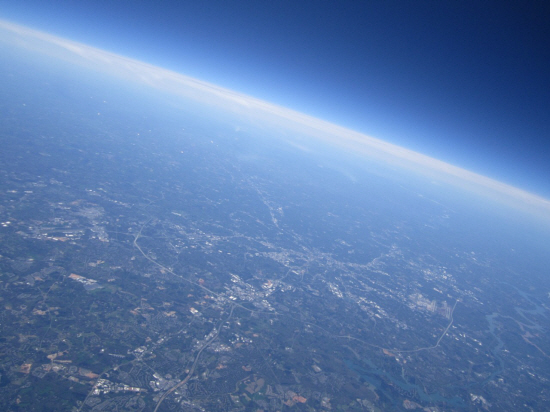ANTI-FREEZE polymers designed by the University of Warwick have been launched into high altitude as part of a successful NASA-funded project in the USA.
The polymers – which were developed by Professor Matthew Gibson’s lab in the Department of Chemistry and Warwick Medical School – were sent 87,468 feet upwards towards space in an unmanned balloon by science students in North Carolina.
The balloon contained blood and plant algae samples – mixed with the antifreeze polymers – and the aim of the mission was to determine whether they can survive the extreme cold temperatures of near space.
The protein-inspired polymers are designed to slow the rate of ice growth, and therefore protect the cells from the extreme cold.
The blood and algae samples mixed with Professor Gibson’s polymers survived the extreme conditions.
Samples without the polymers were destroyed – showing how essential this technology was to the mission, and how it could revolutionise the way we store cells and tissue for transplantation.
Professor Gibson is a world-leading authority on anti-freeze protein mimetics.
For this reason, members of the project contacted him from across the Atlantic with a question about the proteins.
The Gibson Group’s research is focused on understanding how natural anti-freeze proteins, which enable life to flourish at low temperatures, can be used to develop new compounds to improve cell and tissue storage.
The team behind this mission was comprised of thirteen teachers and science students from Edgecombe Community College in North Carolina, USA.
Talking about the mission, Professor Gibson said: “I was thrilled to be contacted by the lead student, Jillian, who had seen our work on cell cryopreservation developed here at Warwick in my group.
“I was really proud to make a contribution to an enthusiastic set of students working on this great program to get high school students involved in real science. I hope it inspires more to take part in the future.”
Rebecca Stamilio-Ehret is a Physics and Astronomy teacher at the college, and is the project co-ordinator.
She added: “Students enjoy the challenge of this type of real-world project. They get very involved and have to combine lots of skill sets, like math, science, technical, and problem-solving skills.”
Equipment that collects data such as compass readings, temperature, altitude, and barometric pressure, also went up with the balloon – as well as a camera which took photos and video footage in high altitude.
The project is funded through a NASA and the North Carolina Space Grant. Professor Gibson’s research is funded by the European Research Council via a prestigious starter Grant: CRYOMAT.











